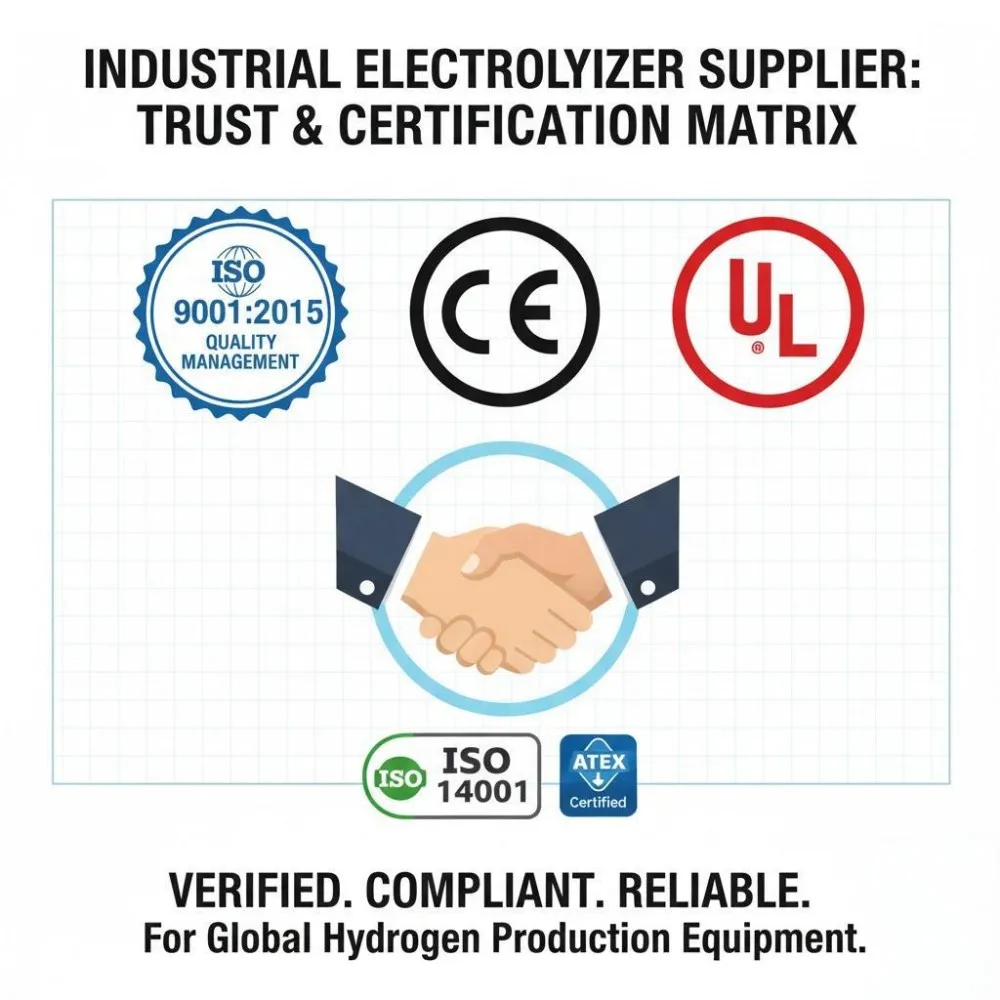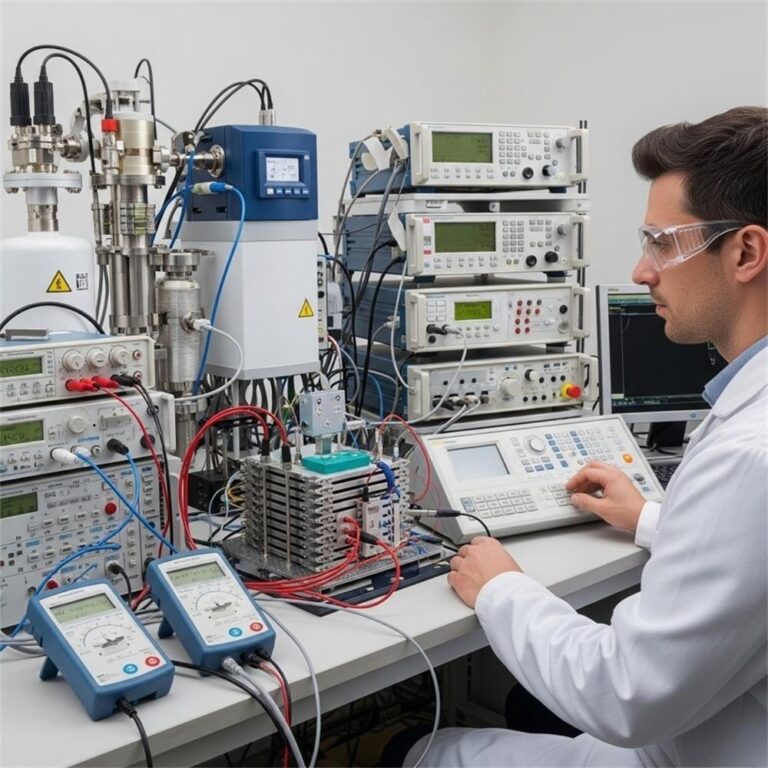Discover how OEM water hydrogen generators offer customized solutions for seamless fuel cell integration. Explore design options, case studies, and future trends. Contact us for a consultation!
I. Introduction
Hydrogen has emerged as a promising clean energy solution in the global shift toward sustainability. As a zero-emission energy carrier, hydrogen powers everything from vehicles to backup power systems through hydrogen fuel cells. However, the efficiency of these systems heavily depends on the quality and integration of their hydrogen supply.
That’s where OEM water hydrogen generators come into play. As custom-built systems designed specifically for fuel cell applications, OEM (Original Equipment Manufacturer) generators provide precision, efficiency, and adaptability that off-the-shelf solutions often lack.
This article explores how OEM water hydrogen generators are revolutionizing hydrogen supply for fuel cells. From design flexibility and integration to future-ready features, we’ll break down why OEM customization is the go-to choice for modern energy systems.

II. Understanding OEM Water Hydrogen Generators
Water Electrolysis: A Clean Pathway to Hydrogen
At the heart of most OEM hydrogen generators is water electrolysis. This process splits water (H₂O) into hydrogen (H₂) and oxygen (O₂) using electricity, ideally sourced from renewable energy. The result? High-purity hydrogen with zero carbon emissions during production.
Key Components of a Water Hydrogen Generator
- Electrolyzer Cell Stack – Performs the electrolysis process.
- Power Supply & Control Systems – Regulates current and voltage.
- Gas Separation Units – Ensures purity of hydrogen output.
- Cooling & Safety Mechanisms – Maintain stable, safe operations.
Why Water is the Ideal Feedstock
- Abundant and Sustainable – Easily accessible with minimal environmental impact.
- Purity Control – Water can be purified to meet high fuel cell requirements.
OEM vs Standard Hydrogen Generators
| Feature | OEM Generator | Standard Generator |
|---|---|---|
| Customization | High – Built to spec | Low – Fixed specs |
| Integration Ease | Seamless | May require adaptations |
| Performance Optimization | Tuned to application | Generic performance |
| Cost-Efficiency (Long-Term) | Higher ROI | Lower upfront, higher O&M |
Why Go Custom?
OEM hydrogen generators provide tailored solutions—whether you need high-purity hydrogen for PEM fuel cells or compact systems for mobile applications. They bridge the gap between complex fuel cell systems and real-world operational needs.
III. The OEM Manufacturing Process
The journey from concept to final product involves several meticulous stages, ensuring that each hydrogen generator aligns perfectly with fuel cell system requirements.
1. Initial Consultation & Design
- Define operating conditions: flow rate, pressure, purity
- Understand spatial constraints and integration needs
- Set performance KPIs with the client
2. Custom Engineering
- Detailed CAD designs and system schematics
- Integration with client’s fuel cell architecture
- Simulation and modeling for efficiency
3. Component Selection
- Choosing advanced materials for electrolyzers (e.g., PEM, alkaline)
- Selecting sensors, valves, and safety systems compatible with hydrogen
4. Precision Manufacturing
- Assembling components in controlled environments
- Adhering to ISO and CE certifications for safety and quality
5. Rigorous Testing & Validation
- Leak tests, pressure resistance, flow calibration
- System-level testing under real-world conditions
This thorough process ensures that every OEM hydrogen generator not only meets but exceeds industry standards.
IV. Customization Options for Fuel Cell Integration
Customization is key to compatibility and performance. OEM hydrogen generators can be tuned across multiple parameters:
Hydrogen Purity Levels
Different fuel cells have unique purity requirements:
- PEM Fuel Cells: ≥99.999% (ultra-high purity)
- Solid Oxide Fuel Cells (SOFC): May tolerate slightly lower purities
OEM systems can integrate purifiers and desiccant dryers to achieve desired levels.
Operating Pressure
Custom configurations allow hydrogen delivery at:
- Low pressure (for lab setups)
- High pressure (for mobile or industrial applications)
Flow Rate and Capacity
Designed to match the hydrogen consumption of the fuel cell system:
- kW-based flow control
- Real-time flow monitoring
Integrated Control Systems
- Smart control panels for on/off operation
- Modbus, CAN bus, and Ethernet communication
- Remote diagnostics and monitoring via cloud platforms
Size and Form Factor
OEMs offer compact, modular units for tight spaces or mobile use. Mounting options (skid-based, wall-mounted) are available to simplify installation.
V. Integration with Fuel Cell Systems
Achieving synergy between the hydrogen generator and the fuel cell is essential.
Direct Coupling Benefits
- Eliminates intermediate storage
- Reduces system lag and energy loss
- Improves efficiency in microgrid or backup setups
Hydrogen Storage Considerations
In some systems, temporary storage is required. OEM solutions can include:
- Compressed hydrogen tanks
- Metal hydride storage
- Cryogenic options (for large-scale needs)
Power Management Integration
Hydrogen production must align with the fuel cell’s load demand. OEM systems can:
- Ramp up or down production dynamically
- Interface with renewable energy systems (e.g., solar inverters)
Safety and Compliance
Safety features typically include:
- Hydrogen leak detectors
- Overpressure valves
- Flame arrestors
- Automated shutdown systems
Remote Monitoring Capabilities
IoT-powered dashboards enable operators to:
- Track performance metrics
- Predict maintenance needs
- Conduct remote troubleshooting
Continuing from where we left off…
VI. Case Studies: Successful OEM Hydrogen Generator Integrations
Real-world applications highlight the true value of OEM water hydrogen generators. Here are three compelling examples:
Case Study 1: Stationary Fuel Cell Power Plant
Challenge: A commercial facility required a hydrogen generator to support a stationary PEM fuel cell system for backup power. The site had limited space and demanded ultra-high purity hydrogen to protect sensitive electronics.
OEM Solution:
- Compact generator skid with integrated purification system
- 99.999% hydrogen purity output
- Seamless connection to existing building management systems
Results:
- 20% higher fuel cell efficiency
- Zero unplanned outages
- ROI achieved within 2.5 years
Case Study 2: Mobile Hydrogen-Powered Forklifts
Challenge: A logistics provider needed an on-site hydrogen generator for its fleet of fuel-cell-powered forklifts. The system had to be rugged, mobile-friendly, and operate in varied temperatures.
OEM Solution:
- Modular generator with trailer-mounted design
- On-demand hydrogen delivery to reduce storage needs
- Integrated cooling system for hot climates
Results:
- Reduced hydrogen supply costs by 35%
- Enhanced forklift uptime
- Boosted workplace safety and reduced emissions
Case Study 3: Hydrogen Fueling Station
Challenge: A city initiated a pilot hydrogen fueling station for public and private EV fleets. Reliability and public safety were top priorities.
OEM Solution:
- High-capacity water electrolyzer with dual-output pressure settings
- Continuous operation with auto-restart features
- Real-time remote control and alerts
Results:
- Supported 500+ hydrogen refueling sessions/month
- No safety incidents over 18 months
- Recognized as a national model for clean transit
These case studies show how OEM customization adapts to diverse use-cases and drives impactful results.
VII. Future Trends in OEM Hydrogen Generator Technology
As the hydrogen economy expands, OEM generators are evolving to meet new expectations in efficiency, integration, and intelligence.
Advancements in Electrolyzer Technology
- Solid Oxide Electrolyzers (SOEC) for higher efficiency at elevated temperatures
- Membrane innovations enhancing durability and lowering energy consumption
- Modular designs allowing easier upgrades and scalability
Integration with Renewable Energy Sources
OEM generators increasingly operate in tandem with:
- Solar PV systems
- Wind turbines
- Hydro energy sources
This synergy enables decentralized green hydrogen production, reducing transmission costs and carbon footprints.
Smart Control and Optimization
- AI-driven algorithms for predictive maintenance and dynamic load balancing
- Machine learning models that adjust hydrogen flow in real-time based on weather and fuel cell load
- Integration with energy management systems (EMS) for grid balancing
Miniaturization and Decentralization
Expect to see:
- Portable hydrogen generators for drones, RVs, and field devices
- Containerized solutions for rural or off-grid applications
- Micro-hubs for decentralized hydrogen fueling stations
OEMs are at the forefront of making hydrogen accessible, efficient, and smart.
VIII. Conclusion
OEM water hydrogen generators represent the next generation of hydrogen infrastructure. By offering tailored solutions that meet exact specifications, they allow fuel cell systems to operate at peak efficiency with minimal compromise.
Whether you’re managing a commercial facility, a transportation fleet, or a clean energy project, OEM hydrogen generators:
- Enhance integration
- Improve fuel cell performance
- Enable long-term cost savings
Ready to optimize your hydrogen strategy? Contact our team today for a consultation on custom OEM hydrogen generator solutions built for your unique needs.
FAQs: OEM Water Hydrogen Generator and Hydrogen Fuel Cell
1. What is an OEM hydrogen generator?
An OEM (Original Equipment Manufacturer) hydrogen generator is a custom-built device that produces hydrogen through water electrolysis. It’s designed to match specific technical and performance needs of a client, especially for fuel cell integration.
2. Why is hydrogen purity important for fuel cells?
Fuel cells, especially PEM types, are sensitive to impurities. High-purity hydrogen (often ≥99.999%) ensures optimal performance, longevity, and safety of the fuel cell system.
3. Can OEM hydrogen generators be used off-grid?
Yes. Many OEM systems are designed to integrate with renewable sources like solar or wind, making them ideal for off-grid or decentralized applications.
4. How long does it take to design and build an OEM hydrogen generator?
Depending on complexity, OEM hydrogen generators can take 3–6 months from consultation to deployment, including design, manufacturing, and testing phases.
5. Are OEM hydrogen generators scalable?
Absolutely. OEM designs often use modular components, allowing for easy scaling of capacity as demand grows.
6. What industries benefit most from OEM hydrogen solutions?
Key sectors include:
- Transportation and logistics
- Renewable energy and microgrids
- Industrial backup power systems
- Research and laboratory environments
🔗 External Resource:
For more technical insights, check out the U.S. Department of Energy’s Hydrogen and Fuel Cell Technologies Office: https://www.energy.gov/eere/fuelcells







